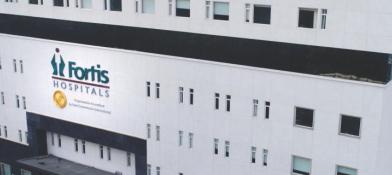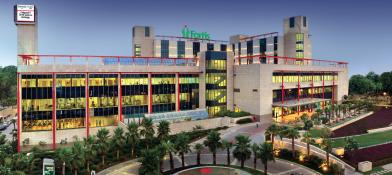Robotic assisted kidney transplant (RAKT) technique is a key surgical specialty at Fortis. The state-of-the-art surgical approach combines the precision and dexterity of robotics with the skill and expertise of our surgeons to increase success rates and safety for kidney transplant procedures. Use of a surgical robot is becoming a major indication for kidney transplant, particularly in obese recipients, where in the complications of open surgical wound are slightly higher than usual.
Conditions suitable to perform Robotic-assisted Kidney Transplant
Robotic-assisted kidney transplants, an advanced surgical techniques for patients with various renal conditions. Individuals with end-stage renal disease, kidney failure, those requiring a transplant due to chronic kidney conditions or patients who are advised to undergo a robotic kidney transplant by their treating doctor can benefit from the precision and minimally invasive robotic-assisted procedures.
Benefits of Robotic-assisted Kidney Transplant
- Enhanced surgical precision
- Minimally invasive approach
- Reduced complications and improved outcomes
- Patient safety and comfort
Our Team of Experts
-
 Dr. Anil MandhaniEXECUTIVE DIRECTOR UROLOGY
Dr. Anil MandhaniEXECUTIVE DIRECTOR UROLOGY -
 Dr. Mohan KeshavamurthySENIOR DIRECTOR UROLOGY
Dr. Mohan KeshavamurthySENIOR DIRECTOR UROLOGY
Related blogs
View allFAQs
Are there different types of Surgery?
Open surgery
This requires large incisions to view the entire surgery area and perform the procedure using hand-held tools.
Minimally invasive surgery includes:
Traditional laparoscopic surgery:
Surgeons perform laparoscopic surgery using special long-hand held tools while viewing magnified images from the laparoscope (camera) on a video screen. Laparoscopy requires much smaller incision than open surgery. Instruments have restricted range of motion as compared to Robotic arms.
Robotic-assisted surgery:
While the word “robotic” is in the description, a robot doesn’t perform surgery. Your surgeon is the one performing surgery using the Robot and instruments. Robotic arms are operated by the surgeon at the console. With robotic arms and instruments engineered specifically for surgical use, the operative team can observe the surgery area in a highly accurate manner, with improved control, and in three-dimensional high definition.
Why your doctor may recommend robotic-assisted surgery?
Just as technology, such as MRI and CT scanners, enhances doctors’ skills beyond what the human body allows, robotic- assisted surgery extends the capabilities of a surgeon’s eyes and hands.
Stays with you in the operating room and uses his or her hands to control a camera and surgical instruments to perform the procedure.
Views the entire operation in 3DHD, giving your surgeon a clear view of the surgical area that is magnified 10 times to what the human eye sees.
Uses tiny instruments that move like a human hand but with an even greater range of motion. The system’s built-in tremor-filtration technology helps your surgeon move each instrument with smooth precision
What are the outcomes?
Be sure to talk with your surgeon about the surgical outcomes he or she delivers by using Robotic systems, as every surgeon’s experience is different. For example, ask about:
1. Length of hospital stay
2. Complication rate
3. Chance of switching to an open procedure
4. Length of surgery
There are additional outcomes of surgery that you may want to talk with your
doctor about. Please ask him or her about all important outcomes
of surgery.
How can you prepare for surgery?
One way to learn more about your surgery is to ask your doctor and care team questions few questions
1. What medical and surgical options are available for me?
2. Which is best for my situation?
3. What are the differences between open, laparoscopic,
4. and robotic-assisted surgery?
5. If you suggest I have surgery, how should I prepare for it?
6. Should I get a second opinion?
7. What am I likely to experience after surgery?
8. What is your surgical training and experience?
9. What is your experience with robotic-assisted surgery?
10. What are your patient outcomes?
How to decide if Robotics Surgery is right for you?
Patients should talk to their doctor to decide if robotic-assisted surgery is right for them. Only a doctor can determine whether robotic-assisted surgery is appropriate for a patient’s clinical indication. Patients and doctors should review all available information on both non-surgical and surgical options and make an informed decision.








